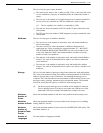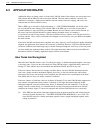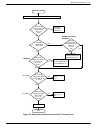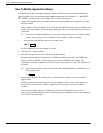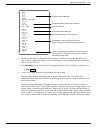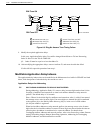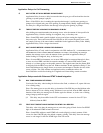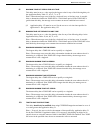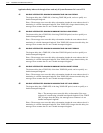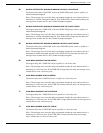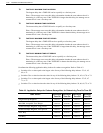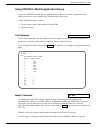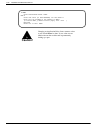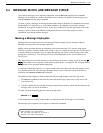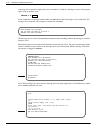
Maintenance Commands 6-53
Octel 200/300 S.4.1PB60019−01
MAXIMUM TONE OFF PERIOD FOR ANY TONE
This delay must be set to a value equal to the largest value for any of the following delays in
the Application Delay Table: 55, 65, 67, 71, or 75.
Use — When the message server looks for a ringback, busy, or fast-busy tone, it uses this
delay to determine whether the TONE OFF is a valid silence period. If the TONE OFF is
greater than this delay, the message server assumes an answer condition has occurred.
. Application delay 123 must be set to 0 for the server to wait the time specified in
application 51. See application delay 123.
MINIMUM TONE OFF PERIOD FOR ANY TONE
This delay must be set to a value less than the value for any of the following delays in the
Application Delay Table: 56, 66, 68, 72, or 76.
Use — When the message server looks for a ringback, busy, or fast-busy tone, it uses this
delay to determine whether the TONE OFF is a valid silence period. If the TONE OFF is less
than this delay, the message server assumes that an answer condition has occurred.
RINGBACK MAXIMUM TONE ON PERIOD
The longest delay that a TONE ON can be to qualify as a ringback.
Use — The message server uses this delay to determine whether the tone cadences that it is
monitoring is a ringback. If the TONE ON is longer than this delay, the message server
assumes that it is not a ringback.
RINGBACK MINIMUM TONE ON PERIOD
The shortest delay that a TONE ON can be to qualify as a ringback.
Use — The message server uses this delay to determine whether the tone cadences that it is
monitoring is a ringback. If the TONE ON is shorter than this delay, the message server
assumes that it is not a ringback.
RINGBACK MAXIMUM TONE OFF PERIOD
The longest delay that a TONE OFF can be to qualify as a ringback.
Use — The message server uses this delay to determine whether the tone cadences that it is
monitoring is a ringback. If the TONE OFF is longer than this delay, the message server
assumes that it is not a ringback.
RINGBACK MINIMUM TONE OFF PERIOD
The shortest delay that a TONE OFF can be to qualify as a ringback.
Use — The message server uses this delay to determine whether the tone cadences that it is
monitoring is a ringback. If the TONE OFF is shorter than this delay, the message server
assumes that it is not a ringback.
TIME TO WAIT FOR FIRST TONE
This delay should only be modified when using CPT-DTMF integration and must be set to 0
or a value greater than application delay 51.
Use — If set to 0, the server waits for the amount of time specified by application delay 51
for the first TONE ON. If application delay 123 is non-zero, after dialing out digits for an
outcall, the server waits this amount of time for the FIRST TONE ON condition. If no TONE
ON occurs in the specified time, the server assumes the call was answered.
51
52
53
54
55
56
123



